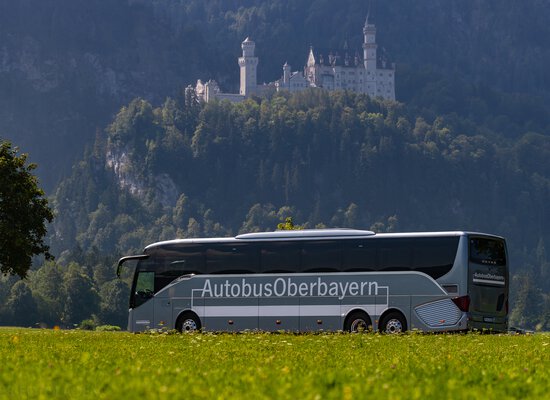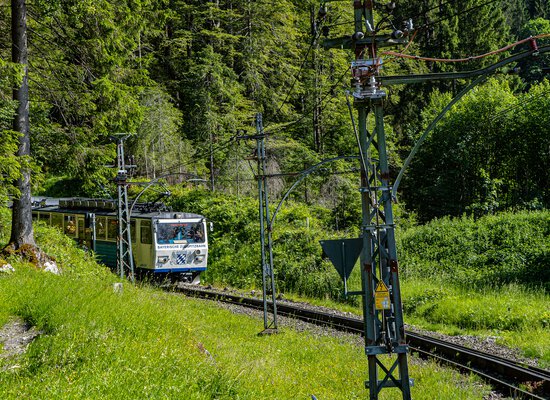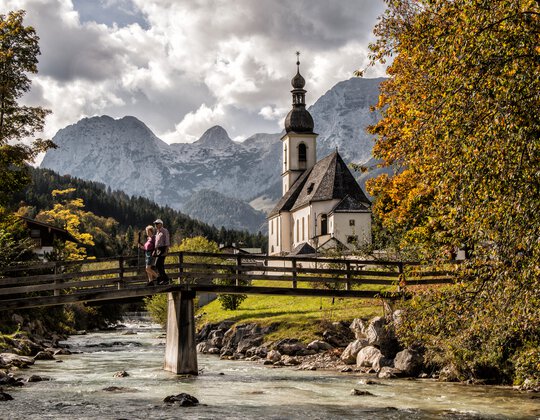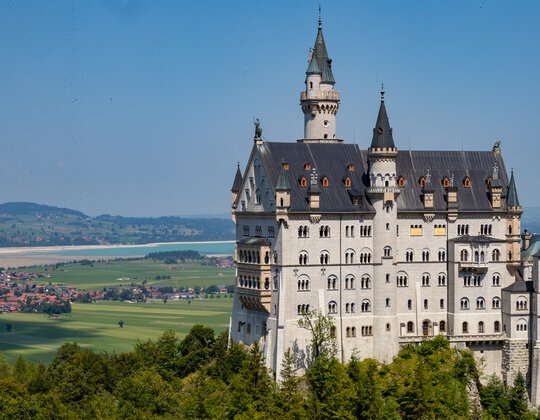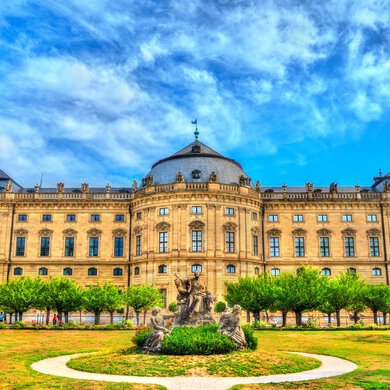
Bavaria's World Heritage Sites – Fascinating Places and History
Bavaria is a real treasure trove for anyone interested in history, culture, and architecture. With its 14 UNESCO World Heritage Sites, the Free State is one of the most culturally rich regions in Europe. From prehistoric pile dwellings and Roman border fortifications to fairytale royal castles – here you can experience a fascinating journey through time spanning thousands of years. Be enchanted by the diversity and beauty of these extraordinary places and immerse yourself in the rich history of the Free State.
What is UNESCO World Heritage?
UNESCO World Heritage includes sites of exceptional universal value to all of humanity. UNESCO has set itself the task of protecting these cultural and natural assets and preserving them for future generations. In order to receive this outstanding recognition and be included in the World Heritage List, sites must meet strict criteria: They must represent a masterpiece of human creative genius, represent significant stages in human history, or be an exceptional testimony to a cultural tradition.
The list of World Heritage Sites in Bavaria
Bavaria can be proud of its impressive collection of 14 World Heritage Sites. These impressive places represent a variety of cultural treasures that reflect different eras and aspects of human history.
Royal dreams (new since 2025)
1st Neuschwanstein Castle
The fairytale castle near Füssen is the number one tourist attraction in Bavaria. King Ludwig II had it built in 1869 as an idealized medieval knight's castle, inspired by Wartburg Castle and the operas of Richard Wagner. Despite the most modern technology of its time, it remained a romantic retreat for the fairytale king.
2nd Herrenchiemsee Palace
The “Bavarian Versailles” was built on Herreninsel island in Lake Chiemsee starting in 1878. Designed as a tribute to Louis XIV and the absolute divine right of kings, it remained unfinished after Ludwig's death in 1886. The large Hall of Mirrors even surpasses its model in the Palace of Versailles by two meters in length.
3rd Linderhof Palace
The smallest of the three royal palaces is the only one that Ludwig II lived to see completed. Nestled in the Ammergau Alps, it captivates visitors with its magnificent palace gardens and the famous Venus Grotto—an artificial stalactite cave with electric lighting.
4th Royal House on Schachen
Ludwig's mountain residence is located at an altitude of 1,866 meters in the Wetterstein Mountains. While the exterior façade is kept in a simple Swiss chalet style, the oriental Turkish Hall on the upper floor surprises with its magnificent furnishings. Our tip: Neuschwanstein and Linderhof Castles can be visited on a day trip from Munich.
Architectural masterpieces
5th Würzburg Residence and Court Garden (since 1981)
The Würzburg Residence is considered the most uniform and extraordinary of all Baroque palaces. Balthasar Neumann, together with artists from all over Europe, created a true Gesamtkunstwerk (total work of art) here. Particularly impressive is the staircase with the world's largest ceiling fresco by Giovanni Battista Tiepolo. The residence shows the “synthesis of European Baroque” in its perfect form.
6th Pilgrimage Church of Wies (since 1983)
The Wieskirche near Steingaden stands against the majestic backdrop of the Alps—a consummate work of art of Bavarian Rococo. Between 1745 and 1754, the Zimmermann brothers created a light-flooded interior whose stucco decorations and ceiling paintings create a heavenly, serene atmosphere.
7th Margravial Opera House Bayreuth (since 2012)
The Bayreuth Opera House is the most important and best-preserved example of Baroque theater culture in Europe. Giuseppe Galli Bibiena built it between 1746 and 1750 on behalf of the Margrave couple Friedrich and Wilhelmine. The box theater, made entirely of wood, captivates with its unique carved and painted decorations.
Historic Old Towns
8th Old Town of Bamberg (since 1993)
The “Franconian Rome” is picturesquely situated on seven hills and is considered a unique urban work of art. With 1,200 architectural monuments dating from the 11th to the 18th century, Bamberg shows the development of a Central European city from the High Middle Ages to the Baroque period. The Romanesque Imperial Cathedral with the famous Bamberg Horseman and the Bridge Town Hall, built on a river island, are just some of the highlights.
9th Old Town of Regensburg with Stadtamhof (since 2006)
Regensburg has the largest collection of Romanesque and Gothic architecture north of the Alps. The Old Town of Regensburg comprises 1,000 architectural monuments on 183 hectares and is the only medieval city in Germany that has been preserved in its entirety. As an important trading center between Italy, Bohemia, and Byzantium, it took shape between the 12th and 14th centuries.
Experience Roman history
10th Upper Germanic-Rhaetian Limes (since 2005)
The Roman border wall stretched over 550 kilometers from Bad Hönningen on the Rhine to Regensburg. In Bavaria, it covers 158 kilometers with over 100 military camps and 900 watchtowers. This impressive border fortification from the 1st to 3rd centuries shows the borders of the mighty Roman Empire and is now the longest archaeological monument in Europe.
11th Borders of the Roman Empire: Danube Limes (since 2021)
The Danube Limes was the “wet” border of the Roman Empire along the Danube. Legion camps, forts, and watchtowers stretched from Bad Gögging to Slovakia. Civilian settlements sprang up around these garrison locations, allowing soldiers and civilians to enjoy the amenities of Roman culture.
Prehistoric evidence
12th Prehistoric pile dwellings around the Alps (since 2011)
Three Bavarian sites in Pestenacker, Unfriedshausen, and on Roseninsel in Lake Starnberg bear witness to the early settlers of the region. These Stone Age settlements above the water offered protection from predators while also enabling fishing and agriculture. The finds include the oldest textiles and wheel finds in Europe.
Technical innovations
13th Augsburg water management system (since 2019)
The Augsburg water system is an 800-year-old masterpiece of water management. With its network of canals, water towers, and power plants, it demonstrates the exemplary use of water resources over seven centuries. Noteworthy is the strict separation of drinking and industrial water, which has been practiced since the 15th century.
Spa culture and wellness
14th Europe's important spa towns: Bad Kissingen (since 2021)
Bad Kissingen is one of the eleven most important spa towns in Europe and represents the European spa tradition from the 18th to the 20th century. With the oldest spa garden (1738) and the largest ensemble of historic spa buildings in Europe, the town attracted international guests from all over the world. The tradition of serving healing water and the regular spa concerts continue to this day.
Other outstanding places in Bavaria
In addition to the official German UNESCO World Heritage Sites, Bavaria is home to numerous other cultural treasures. There are currently three promising proposals on the UNESCO candidate list: the Alpine and pre-Alpine meadows and moorlands with the impressive Murnauer Moos, and the Olympic Park in Munich with its innovative tent roof constructions by Frei Otto. Cities such as Rothenburg ob der Tauber, Nördlingen, and the imposing Ottobeuren Monastery have also been on the candidate list and testify to Bavaria's extraordinary cultural density. The Walhalla near Regensburg and the Gothic cathedral in Ulm are further architectural highlights that are well worth a visit.
What is the significance of the title “World Heritage Site”?
The title of UNESCO World Heritage Site is much more than an award – it brings concrete benefits. For the sites, it means increased protection and international attention, especially with regard to conservation measures. At the same time, the recognition obliges careful and sustainable management of the cultural heritage. The status also has positive effects for the region: international visibility grows, tourism is promoted, and economic impetus is provided. Education and research also benefit, as many World Heritage sites serve as places of knowledge, communication, and cultural exchange. In addition, the award strengthens the local cultural identity and helps to promote dialogue between different cultures.
Conclusion
The UNESCO World Heritage Sites in Bavaria are an impressive testament to human creativity and history. From prehistoric pile dwellings to fairytale royal castles – such as Neuschwanstein Castle – they offer a unique journey through time and across the centuries. The Free State's 14 World Heritage Sites offer a wide range of experiences for architecture and art lovers, history buffs, and nature enthusiasts. Each site tells its own fascinating story and contributes to Bavaria's cultural wealth. Plan your own personal journey of discovery, for example with a guided tour of Neuschwanstein Castle or an excursion into the surrounding cultural landscape. Bavaria's world cultural heritage is not only a window into the past, but also a source of inspiration for future generations.
Frequently asked questions about World Heritage Sites in Bavaria
World Heritage vs. Wonders of the World – What is the difference?
World Heritage and Wonders of the World are often confused with each other. While the Seven Wonders of the Ancient World (such as the Pyramids of Giza) are historical lists of extraordinary structures, the UNESCO World Heritage List is a modern, scientifically based directory of sites worthy of protection. The wonders of the world are based on ancient travelogues, while world heritage sites are based on strict international criteria and a commitment to preservation and protection.
How many UNESCO World Heritage Sites are there in Bavaria?
Bavaria has 14 UNESCO World Heritage Sites (as of 2025). This makes Bavaria the federal state with the highest number of World Heritage Sites in Germany. This impressive number reflects Bavaria's cultural diversity and historical significance. From Roman times through the Middle Ages to modern times, all important eras of European history are represented in the list of World Heritage Sites. Following the inclusion of its castles as World Heritage Sites, Bavaria ranks among the top countries internationally and can compete with countries such as Italy, Spain, and France.
Can you visit the World Heritage Sites in Bavaria?
Many of the UNESCO World Heritage Sites listed in Bavaria can be visited. These are public buildings, town centers, or religious buildings that are accessible to visitors—for example, as part of guided tours, through free access to certain areas, or with special visitor concepts. However, opening hours, admission regulations, and seasonal closures may vary. It is therefore advisable to check the official websites or information provided by the respective sites in advance. Neuschwanstein Castle and Linderhof Castle can be visited on our day tours from Munich.
Which Bavarian castles are World Heritage Sites?
In Bavaria, the UNESCO World Heritage List includes the Würzburg Residence with its magnificent court garden and several royal castles: Neuschwanstein Castle, Herrenchiemsee Castle, Linderhof Castle, and the Royal House at Schachen. Each of these places exemplifies Bavaria's rich culture and history.
Which German state has the most UNESCO World Heritage Sites?
The German state with the most UNESCO World Heritage Sites is Bavaria. With a total of 14 recognized sites, Bavaria encompasses an impressive range of cultural heritage: from prehistoric relics and Roman artifacts to medieval towns, industrial monuments, and Baroque art.



